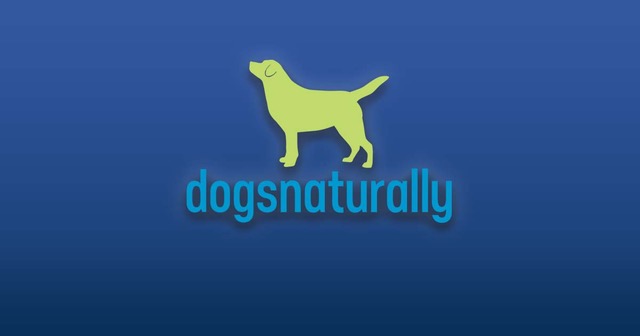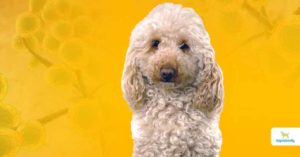Pannus has attacked my 6 yr old German Shepherd for two years now. She has lost a lot of sight. She runs into things head first, falls off ledges and tumbles down hills. This of course is extremely upsetting to her and me. I have her sister which has not developed it. We do various steroid eyedrops, but it is getting the best of her. Our vet said nothing more can be done but scraping the eyes which is temporary at best. I’ve added dried eyebright herb in her food, grate fresh carrot and sweet potato, add canned pumpkin to her meals along with other fresh veggies. Looking for advice to other possible courses of treatment; cannot find any helpful or encouraging info on Internet. Read that supporting the immune system stimulates the Pannus making it worse. Thank you in advance for your time and advice.
~ Mary
Hi Mary-
I’m so sorry to hear about your pup’s eye problems but don’t be discouraged. Where there’s life there’s hope.
For those who don’t know, Pannus is an immune-mediated inflammatory condition of the eye most commonly seen in German Shepherds. Belgian Tervurens, Greyhounds, Huskies, Dachshunds and Border Collies also have an inherited form. However any breed of dog can be affected. Physiologically, it is a chronic irritation of the exterior layers of the cornea. Patients with Pannus may develop a translucent (often brown) pigment covering the eye. It often begins on the outer parts of the cornea but can progress to cover it all. It may even lead to blindness.
Other risk factors for Pannus include exposure to ultraviolet (UV) radiation and high altitudes. Avoiding direct sunlight may reduce risk. However, the many health benefits of exposure to the sun far outweigh this effect in my opinion. UV exposure can also be reduced by using specially designed dog sunglasses such as those at Doggles. Most dogs will accept sunglasses after a short period of adjustment. The rays of the sun are especially harmful, and sometimes even are painful, during the acute phase of this problem. If you decide to avoid the direct sun, then walk your dog in the early morning, in the evening, and in shaded areas.
Similar irritations can be seen in dogs whose eyelids don’t properly cover their corneas. and in those who suffer from KCS (dry eye). These dogs have inadequate lubrication of the cornea and not necessarily an autoimmune disease. For example, some excessively bulgy eyed dogs have this problem. Others however do indeed have an autoimmune problem with tear production. This can be measured with a simple test. Dogs with decreased tear production and poor corneal tear coverage will benefit from the use of lubricating eye drops and gels. Other helpful drops include olive and cod liver oils.
As with many diseases that we see in practice, the autoimmune phenomena seen in patients that have Pannus may be triggered and worsened by immunization. Especially when vaccines are given at a young age or repeated annually. A medical timeline can help your vet determine the clinical consequences from your dog’s vaccinations. Your vet homeopath will want to review this as well as the original medical records. In my opinion, patients with immune problems of this sort should not be vaccinated except as required by law. In addition, I strongly advise homeopathic treatment ideally for at least 3 months before and after any rabies booster.
As you well know Mary, potent immunosuppressive anti-inflammatory eye drops are frequently used to treat Pannus. Various steroids and cyclosporine are the most common. Both of these “Antis” are designed to blunt the immune response of the eye. They slow, and sometimes even reverse, deposition of potentially blinding corneal pigment. As in your pup’s situation Mary, this relief is sometimes insufficient. In addition, these drops work against the healing response. On the other hand, eye lubrication of any sort will support the body while it heals itself during homeopathic treatment. Genteal and Systane are great OTC lubricating drops. There are even ones that contain the commonly used joint supplement hyaluronic acid (HA). HA is more frequently used to lubricate joints in arthritic patients. These drops promote natural healing.
The other conventional option but one which will restore your dog’s vision immediately, is a superficial keratectomy. This procedure is usually performed by a veterinary ophthalmologist. In it he slices off the hyper pigmented brown areas of the cornea temporarily leaving a clear eye. However, if you don’t address the underlying immune problem, the blinding pigment may quickly return. The eye doctor will therefore prescribe topical steroids after surgery. These will reduce relapses by palliating (covering up) the underlying immune problem but never curing it. I typically advise homeopathic treatment both before and after surgery. Supportive lubricating drops combined with homeopathic treatment can both prevent relapses and markedly improve quality of life. In some patients, surgery can even be avoided altogether.
In addition to the potential benefits of homeopathic treatment, there are several nutritional supplements that may help. These include the omega-3 fatty acids found in fish, vitamins C and E, Coenzyme Q-10, and dimethylglycine (DMG). As always, a fresh food meat-based diet is essential. Feeding a fresh variety also allows you to avoid the artificial colorings and preservatives found in many commercial foods.
As in any other case of chronic disease, exploring all of her symptoms is essential to therapeutic success. For example, the single symptom of “pterygium” (one translation for Pannus in the literature) reveals over thirty different homeopathic medicines. These have both caused and cured this symptom in the past. Your homeopath will choose the most similar remedy for your dog based on her totality of symptoms. After administration of the dose(es), close evaluation of her responses on the mental, emotional and physical levels will help guide you and your vets to the best next therapeutic steps. While working with homeopathy, it is best to continue some or all of the gentle supportive methods mentioned previously.
Good luck. Be well.
Dr. Jeff














